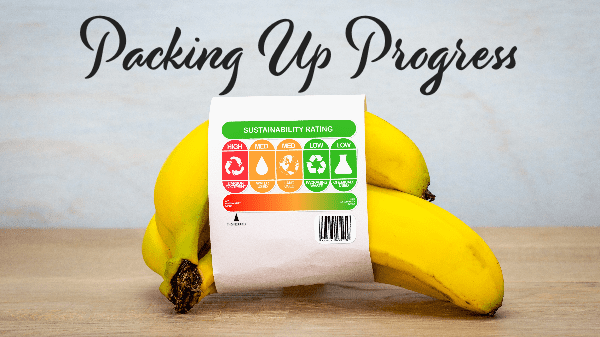The ability to maintain product integrity while preserving the environment is driving much of the produce industry’s packaging innovation.
A new report from PPMI, the Association for Packaging Technology, notes that 44 percent of consumers use sustainable packaging, and more than half seek such packaging out when making buying decisions—double such numbers before the pandemic.
Leaning into green
Transportation, end-of-life cycles, recyclability, and composting are among the sustainable qualities customers are looking for, according to Rachel Atkinson-Leach, vice president of brand and category excellence at Bancroft, WI-based RPE, Inc. BB #:105471
“Sustainability has been in some ways a great race—be first to market or be a fast follower! It’s like trying to find the Holy Grail,” she admits.
“A major retail customer told us they’re shifting to more recycled or postconsumer recycled content packaging,” she adds. “It needs to serve its primary purpose, yet still run through a production plant, survive the supply chain, and last long enough to make it to the recycling or the compost bin.”
Belinda Heidebrink, product marketing lead for Bedford Industries, Inc. of Worthington, MN, concurs that sustainability is the hottest of hot topics in the produce packaging world, noting many growers and packers are actively seeking new ways to reduce environmental impact while maintaining traceability, labeling, storage, and branding expectations.
“One of our most recent innovations is the CloseIt Bio-Clip, a commercially compostable bag closure made of 100-percent USDA-certified bio-based content,” she says. “The closure is still sturdy, and it may be printed on so growers can continue to meet their labeling requirements.”
Touting convenience and quality
Labeling and branding issues, as well as usability factors, are on the mind of Marcello Ferrer, country manager for commercial and operations for Giró Pack, Inc., BB #:189880 with its U.S. headquarters in Vidalia, GA.
Consumer convenience features led the company to develop packaging such as a dual-handle bag in smaller sizes that can still carry two to three pounds of produce without the wastage of plastic film.
“Giró Pack is very dedicated to improving experiences for our brands,” he says, noting many bag styles are influenced “by customer convenience or marketing, such as leaving more surface space on the bag area to allow for branding.”
The company has been developing a number of products for the European market, which it hopes to introduce to the United States once it can navigate the American regulatory environment.
As associate professor at the Michigan State University School of Packaging, Dr. Eva Almenar Rosaleny sees hundreds of packaging innovations a year. One trend that continues to impress her is controlled-release packaging to slow ripening and prevent waste.
She cites Verdant Tech’s commercial plastic sheets, which block ethylene receptors in fruit to slow down ripening, while other innovations control the amount of ethylene with inserts in packaging. “Both are customizable to types of produce, packaging, transport, and storage.”
Protection and reducing waste
At the heart of the matter, though, is the primary purpose of packaging: to protect the product. Until recently, most packaging designs and progress were tied to preventing damage to fruits and vegetables in transit.
Victoria Lopez, marketing and brand manager for Fox Packaging BB #:145435 in McAllen, TX, says this goal has not gone away.
“Packaging has seen some fantastic innovation in recent years, including edible coatings and smart labels,” she observes, “but protection is commodity-specific and built into the packaging itself so it can interact with its environment to maintain optimal conditions for freshness and quality.
“Innovations in material structures have benefited consumers and the industry by reducing food waste, improving safety, enhancing consumer satisfaction, and saving on costs,” she adds.
This is an excerpt from the Applied Technology department in the July/August 2023 issue of Produce Blueprints Magazine. Click here to read the whole issue.



